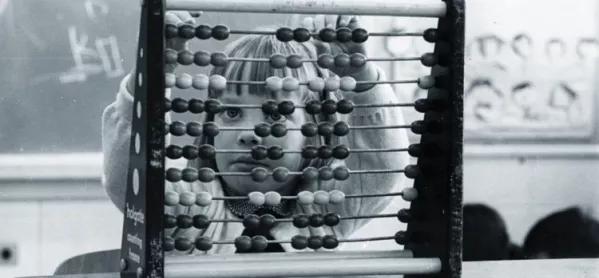- Home
- A blanket calculator ban for primary just does not add up
A blanket calculator ban for primary just does not add up

Imagine if the government announced that it was going to ban the use of technology in primary schools. Would there be an outcry? The answer would almost certainly be yes. At the very least, there would be questions asked and answers sought.
Yet this is precisely the fate that has befallen calculators in the revamped primary Maths curriculum: they are prohibited for all children other than those at the end of key stage 2. Elizabeth Truss, education minister for the coalition government at the time of the decision, stated that primary school children use calculators “too much, too soon” and that “we must get the order right”.
Notwithstanding the lack of an evidence base for these comments, can one envisage a situation where these accusations are levelled at computers? That children should not use them until the age of 9 or until other unspecified basic skills have been secured? Of course not. The government was quick to recognise the importance of coding and its potential impact on industry, hence the disapplication of the previous ICT scheme of study. So why are calculators seen as the black sheep of the technology family?
Part of the reason might lie in the everyday use of calculators; usually a shortcut for helping to work out larger numbers. This might explain the following statement from the national curriculum: “Calculators should not be used as a substitute for good written and mental arithmetic. They should therefore only be introduced near the end of key stage 2 to support pupils’ conceptual understanding.”
‘Wealth of evidence’
I’m not suggesting that calculators should replace mental methods, as these play a key role in everyday life (though there are a fair few advantages to the calculator’s ability to deal with larger numbers).
However, a wealth of evidence suggests that calculators can actually be used to support pupils’ conceptual understanding. Indeed, the above comment implies that conceptual understanding only begins near the end of key stage 2. It is widely accepted that a solid understanding of place value is crucial in the development of conceptual mathematical knowledge. Take the following question, using numbers that Year 3 children would be expected to manipulate: “Work out 798 + 549 without using the number 9”.
Many children will initially try to solve the problem by changing 798 to 788 (interestingly, none I have worked with opted to work with the closer number of 800). A common mistake children make here is subtracting “1” from 798 rather than “10” - indicating a misconception about base-10 numbering. And herein lies some significant advantages of calculators.
A child must have an explicit understanding of the calculation in order to type it correctly, unlike a standard written method. Also, the calculator provides immediate feedback in a non-threatening manner that provokes further independent thinking. In turn, this can develop pupils’ resilience.
Conceptual understanding can be developed in even younger children using number chains. Here, a child is given a chain of numbers, for example, 3, 8, 16, 14, 4, 6. The object of the exercise is to “jump” from one number to the next by entering the correct instructions on the calculator. Again, this requires knowledge of place value and an explicit understanding of the operation involved: for example, a child might be able to “count on” from 3 to 8 but the calculator will enable the teacher to assess whether the child can relate this strategy to addition. The activity can easily be adapted through changing the size of the numbers and manipulating their order to enable all four operations to be used.
The constant function on a calculator provides an excellent opportunity for children to explore number sequences. Simply by pressing “equals”, a child can generate a lengthy number sequence independently and, with guidance, predict what numbers might come next. An Australian study of kindergarten children reported that they were able to discuss four- and five-digit numbers, even before they could read them accurately.
One of the three key aims of the new mathematics curriculum is to offer children an early opportunity to develop their reasoning skills. The calculator is uniquely placed to support even very young children to do this and can also significantly improve conceptual understanding. So, just like the computers that the government so actively encourages in the classroom, calculators should be viewed by teachers as a help rather than a hindrance in the development of children’s mathematical knowledge and understanding.
David Boorman is senior lecturer in primary maths education at Edge Hill University
Keep reading for just £1 per month
You've reached your limit of free articles this month. Subscribe for £1 per month for three months and get:
- Unlimited access to all Tes magazine content
- Exclusive subscriber-only stories
- Award-winning email newsletters

